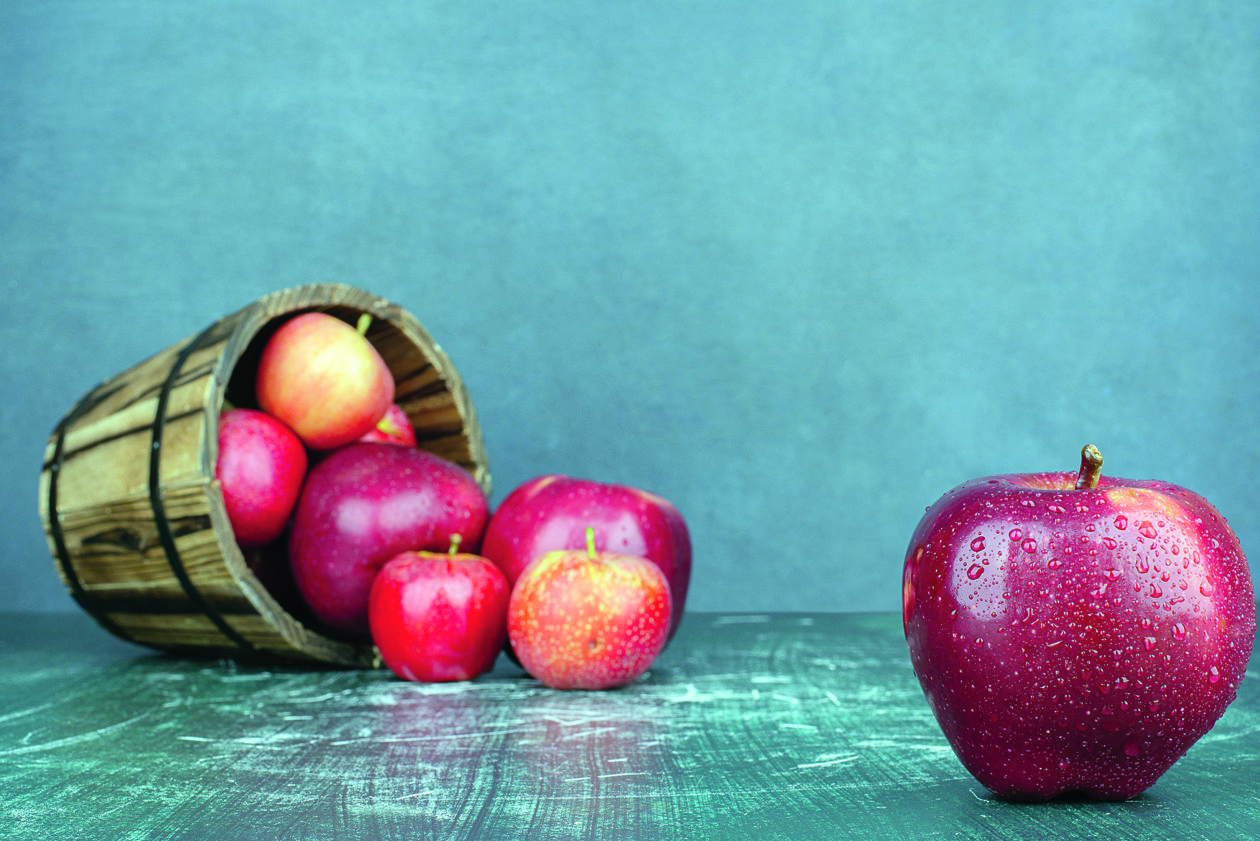
In the ever-evolving world of sustainable design, apple fibres have emerged as an unexpected yet groundbreaking material. These fibres, a byproduct of the fruit juice industry, are now being transformed into stylish and eco-friendly products such as sofas and laptop bags. This innovative use of waste not only underscores a creative approach to recycling but also highlights a growing commitment to environmental responsibility in modern design.
Apple fibres originate from the pomace left over after extracting juice from apples. Traditionally, this pomace — comprising apple skins, seeds, and pulp — was discarded as waste. However, a wave of forward-thinking companies has found a way to repurpose this byproduct into high-quality, durable materials.
The process begins with separating the apple pomace from the juice and drying it to reduce moisture. This dried pomace is then ground into a fine powder, which contains the apple fibres. These fibres are combined with other materials to create composite products. For instance, in the manufacturing of apple fibre sofas and laptop bags, powdered apple fibres are blended with natural or synthetic fibres and moulded into various items.
On average, it takes about 1,000 to 1,500 apples to produce 1 kilogram of apple pomace. Given the efficiency of modern processing techniques, the conversion of apple pomace into fibres and then into finished products can span from several days to a few weeks. The process includes juice extraction, pomace drying (which takes 24 to 48 hours), grinding, and final product manufacturing. The result is a material that combines sustainability with style, offering a new approach to eco-friendly design.
The environmental benefits of apple fibres are substantial. Unlike synthetic materials, apple fibres are biodegradable, reducing the dependency on non-renewable resources. This is particularly significant in the case of sofas, where apple fibres are blended with other sustainable materials to create upholstery that is both comfortable and eco-friendly. The same principles apply to apple fibre laptop bags, which are designed to be durable and have a reduced carbon footprint.
Incorporating apple fibres into everyday products reflects a broader trend towards sustainability in design. As consumers become more environmentally conscious, there is a growing demand for innovative and eco-friendly materials. Apple fibres are an excellent response to this demand, offering a practical solution that does not sacrifice style or functionality.
Apple Fibres in Action
Apple fibre sofas are a prime example of how sustainable materials can be seamlessly integrated into high-quality furniture. The fibres, combined with other eco-friendly materials, create a unique upholstery that is both aesthetically pleasing and environmentally responsible. These sofas are not just green—they are also built to last, with properties that make them both resilient and comfortable.
Insights from the Experts
“Apple fibres contribute to a circular economy by turning waste into valuable products,” explains Anil Sharma, an environmental consultant. “This process helps in minimizing the environmental impact and promotes the use of renewable resources.” Sharma’s 2023 report on sustainable materials highlights the role of apple fibres in advancing eco-friendly design, emphasizing their potential to make a significant difference in reducing waste.
One of the standout features of apple fibres is their natural texture and resilience. These properties make them suitable for creating high-quality products that do not compromise on performance or aesthetics. The lightweight and breathable characteristics of apple fibres add to their appeal, making them a desirable choice for both consumers and designers.
The use of apple fibres in products like sofas and laptop bags represents a significant step toward more sustainable living. By repurposing fruit waste into valuable materials, companies are setting a new standard in eco-friendly design. This approach not only helps reduce environmental impact but also demonstrates that it is possible to create stylish and functional products without relying on non-renewable resources. “It’s the first time I’ve ever heard of apple fibres being used to make laptop bags and sofas, as an eco-friendly enthusiast myself, I’m truly in awe,’’ Sharron Lobo, homemaker.
As the trend towards sustainability continues to gain momentum, apple fibres are poised to play an increasingly important role in the design industry. Their ability to transform waste into high-quality products reflects a broader shift towards innovative and responsible design practices. By choosing apple fibre products, consumers are making a conscious decision to support environmentally friendly practices while enjoying stylish and functional items.
• Apple fibre is used to make sofa covers, purses, laptop bags, clothing etc.
• It takes about 1,000 to 1,500 apples to produce 1 kilogram of apple pomace
• Apple leather is naturally soft, durable, resilient and eco-friendly
